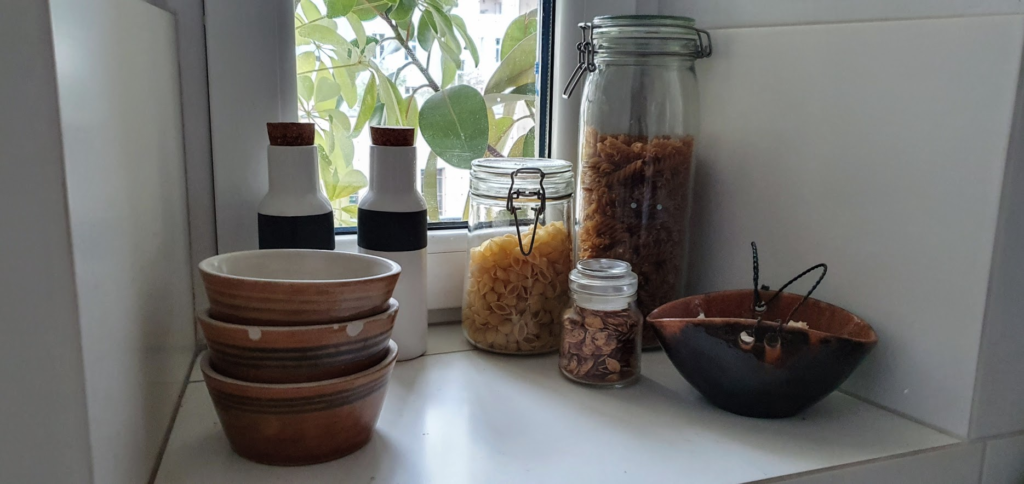If you want to make your wardrobe more eco-friendly and reduce the plastic that you wear this blog post is for you. Explore the importance of reducing plastic fabrics and discover practical tips on how to build a plastic-free wardrobe that aligns with your style and values.
Assessing Your Current Wardrobe
Take a moment for a wardrobe audit: look at the labels of your clothes and identify clothing items made from plastic-based materials. By recognizing these items, you can take steps to minimize their presence in your wardrobe and make more sustainable choices.
Synthetic fabrics have a significant environmental impact not only in the production process and at the end of the product life but also while usage because they can release microplastics.
Materials that you should avoid: Polyester, Nylon, Acrylic, Spandex, and Rayon.
Choosing Natural and Sustainable Fibers
Embrace the beauty and versatility of natural fibres such as cotton, linen, and hemp. These materials are not only comfortable to wear but also have a lower environmental footprint. Look for organic and eco-friendly fabrics that are produced using sustainable practices, avoiding harmful chemicals and excessive water usage.

Shopping Mindfully
Shift your focus towards sustainable and ethical fashion brands that prioritize both style and sustainability. Support companies that are transparent about their supply chain and promote fair labour practices.
Explore second-hand and vintage clothing options to find unique pieces that contribute to a circular fashion economy.
Remember to check labels while shopping and avoid synthetic fibres, so you can keep a plastic-free wardrobe.
The thrift guide — enjoy style in an eco-friendly & ethical way.
Embracing Minimalism and Versatility
Building a capsule wardrobe based on versatile pieces allows for endless outfit combinations while reducing the need for excessive clothing. Emphasize quality over quantity by investing in timeless pieces that will last. By simplifying your wardrobe, you minimize the environmental impact and embrace a more sustainable and intentional approach to fashion.
Caring for Your Clothing
Extend the lifespan of your garments by adopting proper washing and maintenance practices. Opt for environmentally friendly laundry detergents and avoid fabric softeners that contain harmful chemicals. By taking care of your clothes, you reduce the frequency of replacements and contribute to a more sustainable wardrobe.
This is extremely important when speaking about synthetic fibres, so use these tips:
- the less you wash the better
Washing your clothes only when needed can prolongate the durability of your clothes. - keep temperature low
Wash your clothing in cold water and avoid electronic dryers, to reduce the disintegration of the fabrics. - if you dry
When using the dryer replace disposable dryer sheets with reusable wool dryer balls to reduce static and speed up drying time. - filters
Use filters in your washing machine or invest in a filtering bag for your laundry.
Plastic-Free Accessories and Footwear
Extend your sustainable style to accessories and footwear. Choose accessories made from sustainable materials like wood and metal, which add a unique touch to your outfits while reducing plastic waste.
When it comes to footwear, opt for natural and biodegradable options like cork, jute, or sustainably sourced leather.

Upcycling and Repurposing
Unleash your creativity and give new life to old clothing through upcycling projects. Transform worn-out pieces into something new and exciting, adding a personal touch to your wardrobe. Consider customizing and tailoring garments to fit your style and preferences, making them truly one-of-a-kind.
If you’re looking for upcycling inspirations check out my Pinterest.
Building a plastic-free wardrobe is a fashion statement and a commitment to a greener future. By assessing your wardrobe, choosing natural fibres, shopping mindfully, embracing minimalism, and caring for your clothes, you can make a significant impact on reducing plastic waste. Changing your daily routines, your wardrobe or your interiors will keep you motivated to stay eco in other life aspects.

PIN FOR FUTURE











